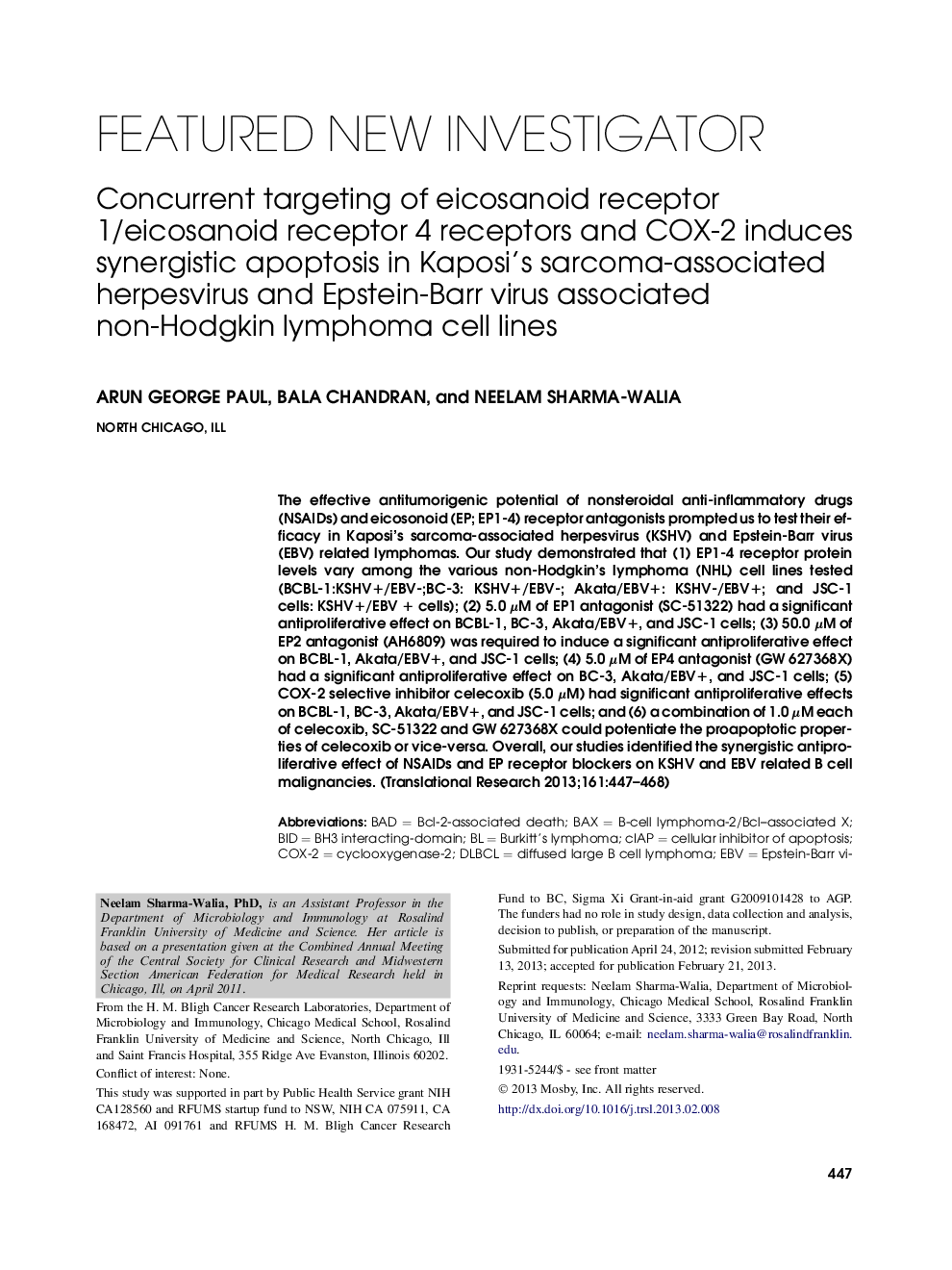| Article ID | Journal | Published Year | Pages | File Type |
|---|---|---|---|---|
| 3840451 | Translational Research | 2013 | 22 Pages |
The effective antitumorigenic potential of nonsteroidal anti-inflammatory drugs (NSAIDs) and eicosonoid (EP; EP1-4) receptor antagonists prompted us to test their efficacy in Kaposi’s sarcoma-associated herpesvirus (KSHV) and Epstein-Barr virus (EBV) related lymphomas. Our study demonstrated that (1) EP1-4 receptor protein levels vary among the various non-Hodgkin’s lymphoma (NHL) cell lines tested (BCBL-1:KSHV+/EBV-;BC-3: KSHV+/EBV-; Akata/EBV+: KSHV-/EBV+; and JSC-1 cells: KSHV+/EBV + cells); (2) 5.0 μM of EP1 antagonist (SC-51322) had a significant antiproliferative effect on BCBL-1, BC-3, Akata/EBV+, and JSC-1 cells; (3) 50.0 μM of EP2 antagonist (AH6809) was required to induce a significant antiproliferative effect on BCBL-1, Akata/EBV+, and JSC-1 cells; (4) 5.0 μM of EP4 antagonist (GW 627368X) had a significant antiproliferative effect on BC-3, Akata/EBV+, and JSC-1 cells; (5) COX-2 selective inhibitor celecoxib (5.0 μM) had significant antiproliferative effects on BCBL-1, BC-3, Akata/EBV+, and JSC-1 cells; and (6) a combination of 1.0 μM each of celecoxib, SC-51322 and GW 627368X could potentiate the proapoptotic properties of celecoxib or vice-versa. Overall, our studies identified the synergistic antiproliferative effect of NSAIDs and EP receptor blockers on KSHV and EBV related B cell malignancies.
